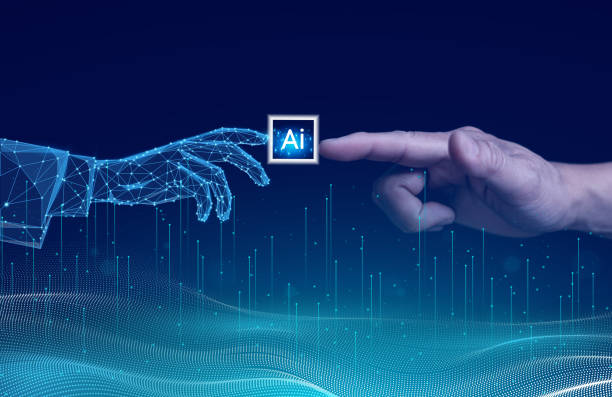What is Artificial Intelligence? Definitions and Basic Concepts
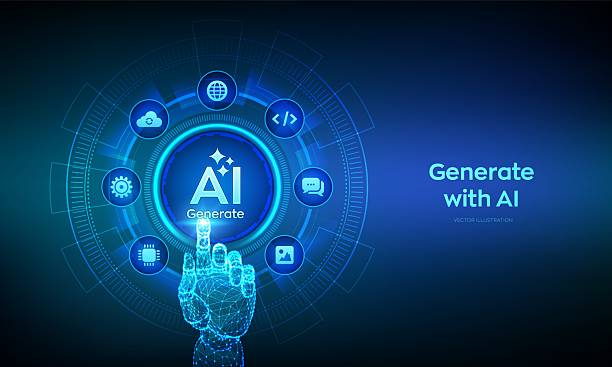
#Artificial_Intelligence (AI) is a branch of computer science that deals with building machines that are capable of performing tasks that usually require human intelligence.
These tasks include learning, problem-solving, pattern recognition, reasoning, and understanding natural language.
Artificial intelligence tries to design systems that can think, decide, and act independently.
The main goal of artificial intelligence is to create systems that can act intelligently like humans and perform tasks that require analysis, understanding, and creativity.
These systems process data and make decisions based on it using complex algorithms and models.
To better understand artificial intelligence, it is important to be familiar with its basic concepts, including Machine Learning, Deep Learning, Neural Networks, and Natural Language Processing.
In short, artificial intelligence is an attempt to build machines that can think and act like humans, and this is made possible by using complex algorithms and models.
Are you losing business opportunities because of an old website? With Rasaweb, solve the problem of not attracting potential customers through your website forever!
✅ Attract more high-quality leads
✅ Increase brand credibility in the eyes of customers
⚡ Get a free consultation for corporate website design
The History of Artificial Intelligence from Beginning to Today
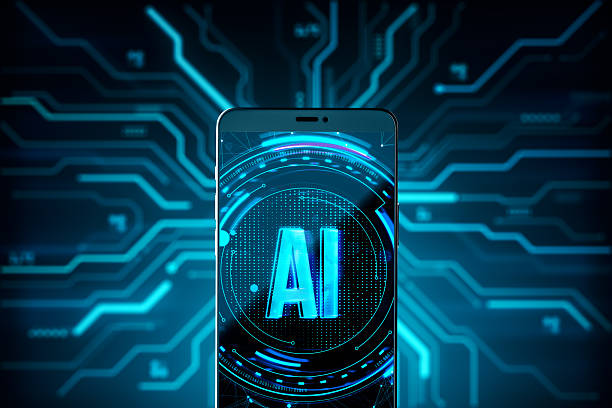
The history of artificial intelligence dates back to the 1950s, when scientists and researchers began to explore the possibility of building machines that could think like humans.
One of the important milestones in this field was the Dartmouth Conference in 1956, which is recognized as the official beginning of the field of artificial intelligence.
At this conference, scientists such as John McCarthy, Marvin Minsky, and Claude Shannon gathered and examined various ideas and methods for building intelligent machines.
In the 1960s and 1970s, significant progress was made in the development of Expert Systems and Natural Language Processing, but due to hardware and software limitations, these advances faced challenges and experienced the “AI winter”.
In the 1980s and 1990s, with advances in technology and increased computer processing power, interest in artificial intelligence was revived and new methods such as machine learning and neural networks were considered.
Today, with the emergence of deep learning and access to vast amounts of data, artificial intelligence has become one of the most popular and widely used areas of technology and is used in various fields such as self-driving cars, facial recognition, machine translation, and virtual assistants.
Ultimately, the history of artificial intelligence shows that this field has faced many challenges and ups and downs, but with advances in technology and the emergence of new methods, it has now become one of the most important and widely used areas of technology.
Types of Artificial Intelligence: A Detailed Approach

Artificial intelligence can be divided into different types based on its capabilities and applications.
One of the classification methods is to divide artificial intelligence into two general types: “Weak AI” and “Strong AI”.
Weak AI, also known as “Narrow AI”, refers to systems that are designed to perform specific tasks and perform well in that limited area.
For example, a facial recognition system or a product recommendation algorithm in an online store are examples of weak AI.
In contrast, Strong AI refers to systems that are capable of performing any task that a human can perform.
This type of artificial intelligence is still in the research stage and there is no practical example of it.
In addition, artificial intelligence can be classified based on learning methods, including Supervised Learning, Unsupervised Learning, and Reinforcement Learning.
Each of these methods is suitable for solving specific problems and is used in different fields.
In general, understanding the different types of artificial intelligence helps us to use this technology more effectively and find better solutions to various problems.
Ultimately, choosing the right type of artificial intelligence depends on the problem we intend to solve, and depending on the type of data and available resources, different learning methods can be used.
Knowing the types of artificial intelligence helps us make better decisions about using this technology.
| Type of Artificial Intelligence | Description | Examples |
|---|---|---|
| Weak AI | Systems designed to perform specific tasks. | Facial recognition, product recommendations, machine translation |
| Strong AI | Systems capable of performing any type of task. | (Does not exist yet) |
| Supervised Learning | Learning using labeled data. | Image recognition, price prediction |
| Unsupervised Learning | Learning using unlabeled data. | Clustering, dimensionality reduction |
| Reinforcement Learning | Learning through trial and error. | Video games, robotics |
Applications of Artificial Intelligence in Today’s World
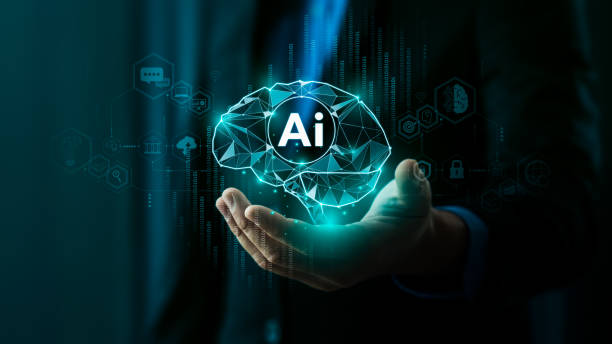
The applications of artificial intelligence in today’s world are very broad and diverse, and have penetrated almost all industries and areas of human life.
In the field of health and medicine, artificial intelligence is used in disease diagnosis, drug development, and the provision of personalized healthcare.
In the automotive industry, self-driving cars use artificial intelligence algorithms and advanced sensors to be able to drive without human intervention.
In the financial and banking sector, artificial intelligence is used in fraud detection, risk management, and customer service.
Also, in the retail industry, artificial intelligence plays an important role in product recommendations, supply chain optimization, and improving customer experience.
In addition, artificial intelligence has many applications in the fields of education, content production, cybersecurity, and many other fields.
In general, artificial intelligence, as a transformative technology, is able to help improve efficiency, increase productivity, and solve complex problems in all industries.
This technology not only helps improve human lives, but also creates new opportunities for innovation and economic development.
Ultimately, the applications of artificial intelligence in today’s world show that this technology has very high potential and can help improve the quality of human life and solve complex problems.
Research shows that 80% of customers trust companies with professional websites more. Does your current website earn this trust?
With Rasaweb’s corporate website design services, solve the problem of customer distrust and weak online image forever!
✅ Create a professional image and increase customer trust
✅ Attract more sales leads and grow your business
⚡ Get a free consultation
Machine Learning and Deep Learning: Key Components of Artificial Intelligence
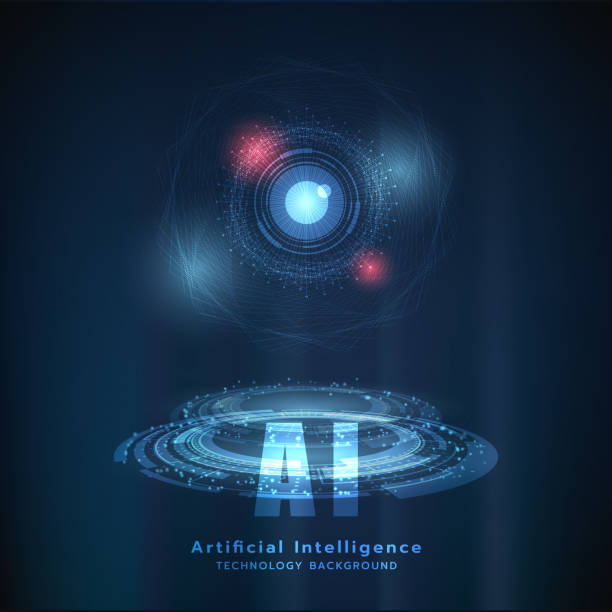
Machine Learning and Deep Learning are two key concepts in the field of artificial intelligence that play a very important role in the development and progress of this technology.
Machine learning refers to a set of algorithms and techniques that allow computers to learn from data and improve their performance without explicit programming.
In other words, machine learning gives computers the ability to identify patterns and relationships in data and make predictions and decisions based on them.
Deep learning, as a subset of machine learning, uses Deep Neural Networks to model data.
These networks consist of multiple layers of neurons that allow computers to identify complex and abstract patterns in the data.
Deep learning has many applications in various fields such as image recognition, natural language processing, and speech recognition, and due to its high ability to learn complex patterns, it has become one of the most popular machine learning methods.
In general, machine learning and deep learning are two powerful tools available to artificial intelligence experts, allowing them to design systems that can solve complex problems and provide innovative solutions.
Ultimately, machine learning and deep learning, as two essential elements in artificial intelligence, play a very important role in the development and progress of this technology and enable computers to learn from data and improve their performance.
Challenges and Limitations of Artificial Intelligence

Artificial intelligence, despite its remarkable progress and widespread applications, faces numerous challenges and limitations that prevent the full realization of its potential.
One of the main challenges is the need for a vast amount of data to train artificial intelligence models.
This data must be of high quality and labeled so that models can correctly learn the patterns and relationships in them.
Another challenge is the issue of explainability of artificial intelligence models.
Many complex models, such as deep neural networks, act as “Black Boxes” and it is difficult to understand the reasons for their decisions.
This issue can be problematic in areas such as medicine and law that require transparency and explainability.
Also, ethical and social issues related to artificial intelligence, such as bias in algorithms, privacy, and the impact of artificial intelligence on the job market, are among the important challenges that need to be addressed.
In addition, hardware and software limitations, such as the need for high processing power and better algorithms, also hinder the wider development and implementation of artificial intelligence.
In general, to overcome these challenges and limitations, more research, the development of new algorithms, and the development of appropriate laws and regulations are needed.
Ultimately, to fully exploit the potential of artificial intelligence, we must pay attention to its challenges and limitations and find appropriate solutions for them.
The Future of Artificial Intelligence: Visions and Possibilities

The future of artificial intelligence is full of exciting visions and possibilities that can significantly change human lives.
With the increasing advances in machine learning, deep learning, and natural language processing, it is expected that artificial intelligence will be able to perform more complex tasks in the near future and create major transformations in areas such as medicine, education, transportation, and manufacturing.
One of the important visions is the development of strong artificial intelligence that is capable of performing any type of task that a human can perform.
Although this goal is still in the research stage, recent advances show that achieving it is not far out of reach.
It is also expected that artificial intelligence will be able to interact more effectively with humans in the future and provide more natural user interfaces.
This can help improve user experience and increase the use of artificial intelligence in everyday life.
In addition, artificial intelligence can play an important role in solving global problems such as climate change, poverty, and disease.
Using artificial intelligence algorithms, complex patterns and relationships can be identified in the data and innovative solutions can be provided for these problems.
Ultimately, the future of artificial intelligence is full of opportunities and challenges, and given the increasing advances in this field, it is expected that this technology will play a very important role in human life in the near future.
| Field | Applications and Possibilities |
|---|---|
| Medicine | More accurate disease diagnosis, development of new drugs, personalized healthcare |
| Education | Personalized learning, intelligent teaching assistants, automated assessment |
| Transportation | Self-driving cars, traffic optimization, intelligent transportation management systems |
| Manufacturing | Advanced automation, intelligent quality control, supply chain optimization |
| Environment | Climate change prediction, natural resource management, pollution reduction |
The Impact of Artificial Intelligence on Jobs and the Labor Market
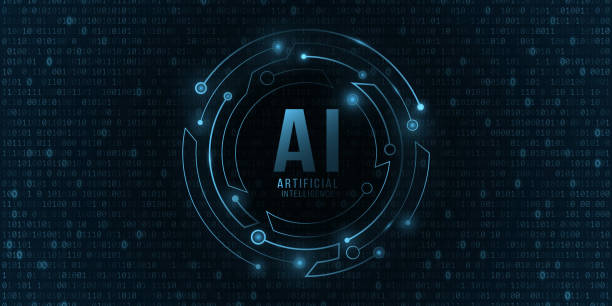
The impact of artificial intelligence on jobs and the labor market has been one of the most discussed and studied topics in recent years.
On the one hand, artificial intelligence can increase productivity and efficiency and reduce costs by automating repetitive and routine tasks.
This can lead to the loss of some jobs, especially jobs that require low and medium skills.
On the other hand, artificial intelligence can also create new job opportunities, especially in areas related to the development, implementation, and maintenance of artificial intelligence systems.
Also, artificial intelligence can lead to the creation of new jobs that do not yet exist and require new skills.
For example, machine learning specialists, data scientists, and artificial intelligence engineers are among the jobs that have been in high demand in recent years.
In addition, artificial intelligence can help improve working conditions and increase employee job satisfaction, as it can take on tedious and repetitive tasks and allow employees to focus on more creative and challenging tasks.
In general, the impact of artificial intelligence on jobs and the labor market is complex and multifaceted and requires proper planning and policymaking to take advantage of its opportunities and prevent its negative effects.
Ultimately, to adapt to the changes resulting from artificial intelligence, people need to learn new skills and be prepared to change jobs.
Also, governments and organizations should provide appropriate training and support programs to help people in this area.
Labor Market and Artificial Intelligence
Are you tired of having visitors to your online store but no sales? Rasaweb solves your main problem by designing professional online stores!
✅ Significant increase in sales with targeted design
✅ Perfect user experience for your customers
⚡ Get a free consultation!
Ethical Aspects of Artificial Intelligence: Considerations and Responsibilities
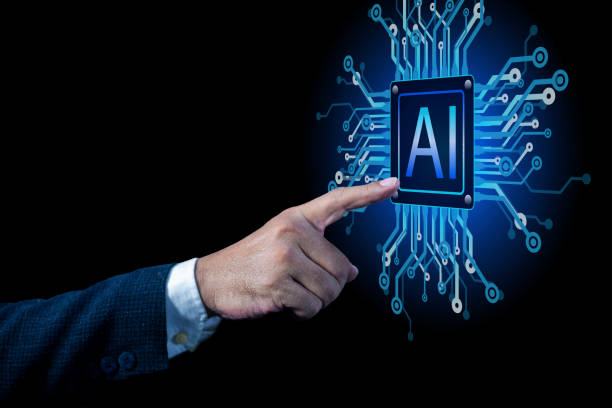
Artificial intelligence, as a powerful technology, brings with it numerous ethical aspects that require careful attention and consideration.
One of the most important ethical considerations is the issue of bias in artificial intelligence algorithms.
If the training data used to build artificial intelligence models is biased, this bias can also be reflected in the decision-making of artificial intelligence systems and lead to unfair and discriminatory outcomes.
For example, a facial recognition system may perform worse in recognizing the faces of people with dark skin tones if its training data mainly includes faces of people with light skin tones.
Another issue is protecting the privacy of individuals.
Artificial intelligence systems often need a vast amount of personal data to be able to perform well.
The collection, storage, and use of this data must be done in compliance with laws and regulations related to privacy protection to prevent misuse.
Also, accountability for the decision-making of artificial intelligence systems is also an important issue.
If an artificial intelligence system makes an incorrect decision that results in damage, it must be determined who is responsible for this damage.
In general, for the responsible use of artificial intelligence, it is necessary to seriously consider its ethical aspects and develop appropriate laws and regulations to prevent misuse of this technology.
Ethics and Artificial Intelligence
Ultimately, the development and use of artificial intelligence must be done in accordance with ethical principles and in the interests of society.
Artificial Intelligence Learning Resources: Training Paths and Useful Tools
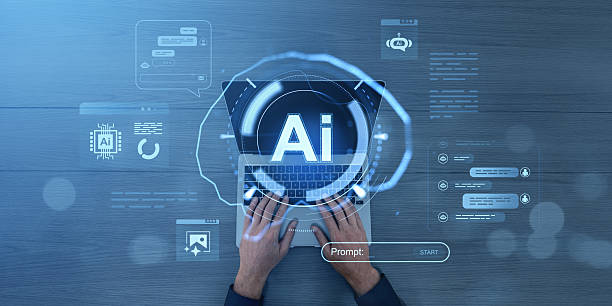
For learning artificial intelligence, diverse educational resources are available that can help people at different levels to acquire the necessary knowledge and skills.
One of the popular educational paths is participating in online courses that are offered by reputable universities and educational institutions.
These courses usually include educational videos, exercises, projects, and tests, and allow people to learn at their own pace and in a self-taught manner.
Among the well-known educational platforms, we can mention Coursera, edX, and Udacity.
In addition to online courses, books and scientific articles can also be valuable resources for learning artificial intelligence.
Reputable books usually explain the basic concepts completely, and scientific articles examine the latest advances and achievements in this field.
Also, there are various tools for developing and implementing artificial intelligence systems that learning them can help people in this field.
Among these tools, we can mention TensorFlow, Keras, and PyTorch, which are open-source software libraries and provide the ability to build and train machine learning models.
In general, for learning artificial intelligence, it is necessary for people to use diverse educational resources and turn their knowledge into skills through practice and practical projects.
Artificial Intelligence Education
Ultimately, by using appropriate educational resources and continuous practice, one can become an artificial intelligence expert and work in this field.
Frequently Asked Questions
| Question | Answer |
|---|---|
| What is artificial intelligence? | It is a simulation of human intelligence in machines programmed to think like humans and imitate their actions. |
| What are the main branches of artificial intelligence? | They include machine learning, deep learning, natural language processing, computer vision, and robotics. |
| What is Machine Learning? | It is a branch of artificial intelligence that focuses on enabling systems to learn from data and identify patterns without explicit programming. |
| Give examples of artificial intelligence applications in our daily lives. | Voice assistants (such as Siri and Alexa), recommendation systems in Netflix and Amazon, self-driving cars, and facial recognition programs. |
| What is Deep Learning? | It is a subset of machine learning that uses multiple-layer (deep) artificial neural networks to process large amounts of data. |
| What is Natural Language Processing (NLP)? | It is a branch of artificial intelligence that focuses on enabling computers to understand, interpret, and generate human language. |
| What are some of the ethical concerns related to artificial intelligence? | They include bias in data, privacy, job loss, and accountability in case of errors. |
| What are the main benefits of artificial intelligence? | Increased efficiency, improved decision-making, automation of repetitive tasks, and discovery of complex patterns in data. |
| How is artificial intelligence used in healthcare? | In diagnosing diseases, discovering drugs, analyzing medical images, and personal care for patients. |
| How do you see the future of artificial intelligence? | It is expected to continue to develop at a rapid pace, affecting all aspects of human life, from industry to education and entertainment. |
And other advertising services of Rasa Web Advertising Agency
Intelligent content strategy: a creative platform to improve customer behavior analysis with marketing automation.
Smart Digital Branding: Transform campaign management with the help of optimizing key pages.
Smart SEO: A creative platform to improve online growth with a SEO-driven content strategy.
Intelligent conversion rate optimization: Transform click-through rates with the help of marketing automation.
Smart reporting: An exclusive service to grow and improve SEO ranking based on customizing the user experience.
And more than hundreds of other services in the field of internet advertising, advertising consulting and organizational solutions
Internet advertising | Advertising strategy | Advertisement report
Sources
What is artificial intelligence? With simple examples
,What is artificial intelligence? Everything about AI in simple language
,What is artificial intelligence? – In simple language (+ free educational video)
,Concepts of artificial intelligence
? Are you ready to transform your business in the digital world? Rasaweb Digital Marketing Agency with expertise in modern user interface website design and comprehensive digital strategies, is your smart solution for growth and visibility.
📍 Tehran, Mirdamad Street, next to the Central Bank, Kazerun Jonoubi Alley, Ramin Alley No. 6


